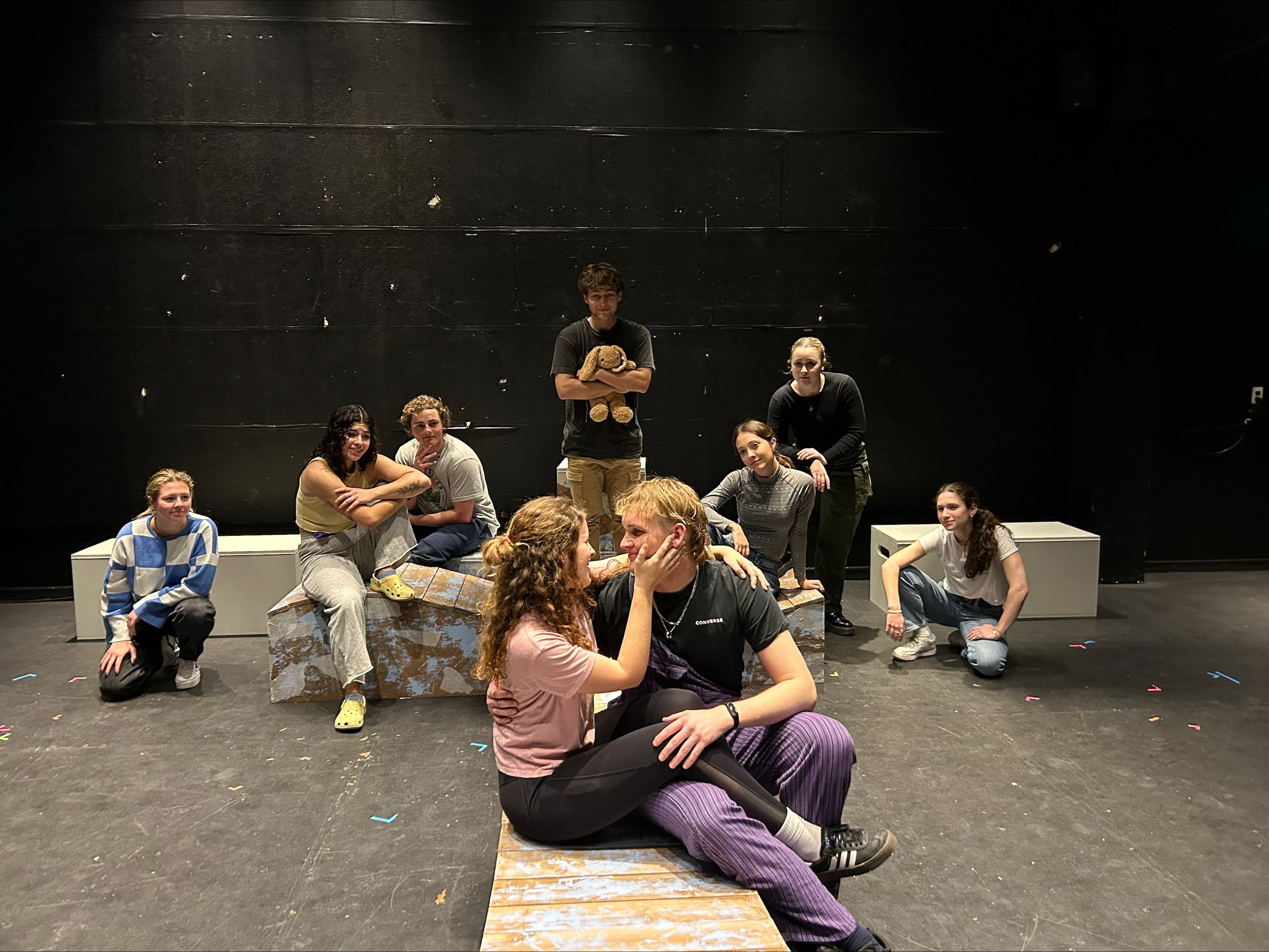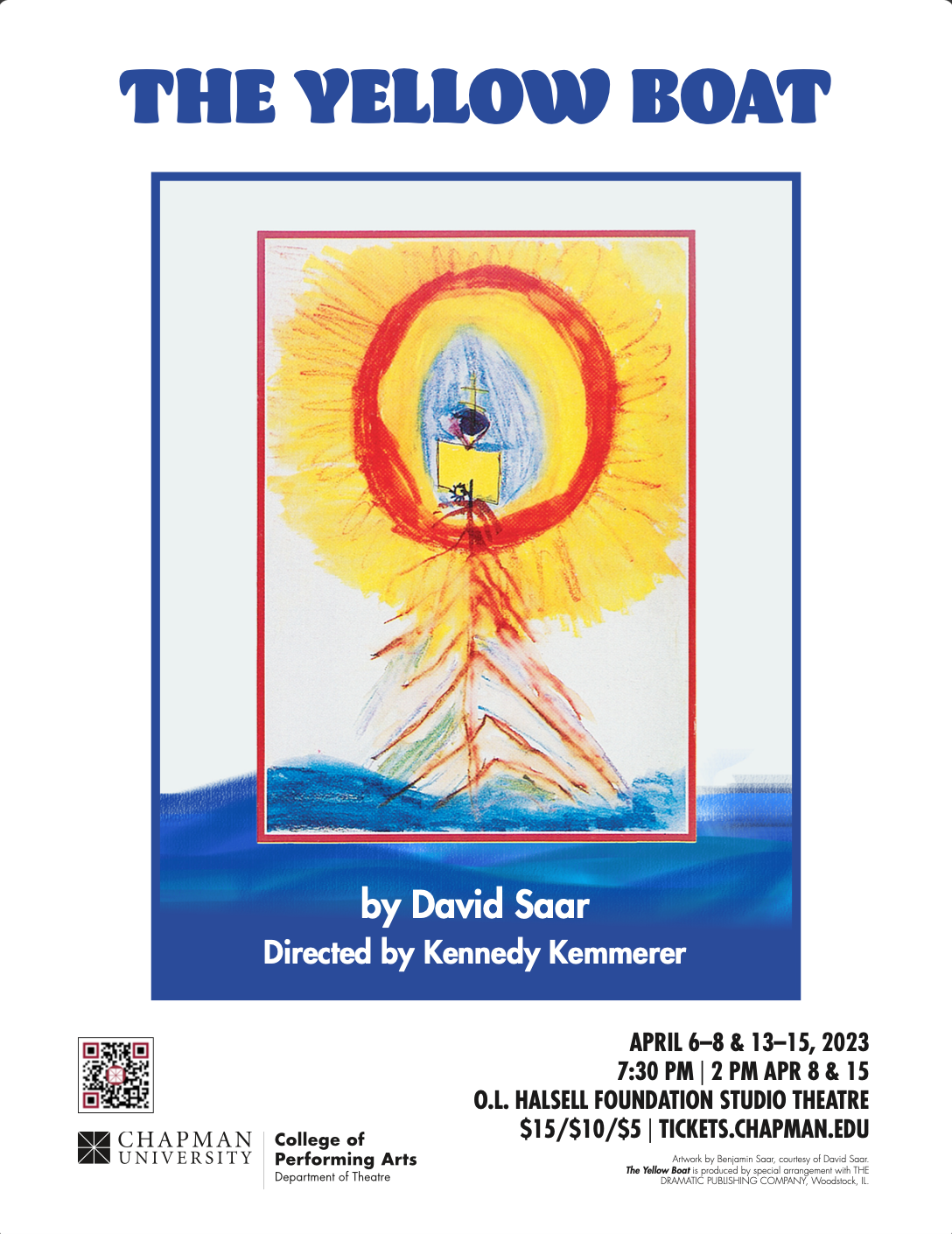Student-directed one-act is a celebration of a child's life lost to AIDS
Kennedy Kemmerer chose “The Yellow Boat” to direct for her spring show due to the colorful imagination displayed in the play that shows a child processing his AIDS diagnosis in his own way. Photos courtesy of Kennedy Kemmerer
Kennedy Kemmerer, a senior theater studies and business administration double major, believes everyone mentally lives in a place of abstract realism.
“I love the environment of abstract realism. I think it kind of lets us get to those (imaginative) places in plays because in reality we would not hear a sound like that all the time and we wouldn't see all these different lighting colors,” Kemmerer said.
Viewers can see the play from April 6 to 8 and 13 to 15 at 7:30 p.m. as well as at 2 p.m. on April 8 and 15 in the Halsell Foundation Studio Theater.
After being the only person to apply to the spring directing show that normally consists of three 30-minute acts, she was asked to do a one-hour one-act to take up more of the time slot. She knew she wanted to direct “The Yellow Boat,” written by David Saar, for her project because it incorporated abstract realism while still telling an important story from history.
“I probably was 16 when I saw (‘The Yellow Boat’),” Kemmerer said. “When I had to go pick a play, it was the first thing that kept coming back to my head.”
Saar wrote this play based on a true story about his son, Benjamin, an 8-year-old with hemophilia who died of AIDS in 1987 that he inherited through a blood transfusion.
In the 1980s, the AIDS pandemic was sweeping the nation, with little known about it. The disease was transmitted to 5,000 hemophiliacs, which resulted in 4,000 deaths, according to the CDC. Hemophilia is an autoimmune disorder in which blood doesn't clot properly, leading to excess bleeding and requiring blood transfusions.
Junior theater performance major Lucy Swinson, who is playing the character of Benjamin's mom, told The Panther that this play is extremely relevant at the moment as she related it to the early stages of the COVID-19 pandemic.
“It's that time when nobody knows anything and at the beginning of COVID, we didn't know how it spread,” Swinson said. "He gets kicked out of school because he has AIDS and his friends and the parents of his friends won't let them see him because they don't know how it spreads.”
The year 1987 is particularly important because of the timing with significant medical advancements taking place in the next couple of years that could have prevented Benjamin obtaining the virus. Although the little boy is dying, Kemmerer said that the majority of the play is about letting a child process in their own way, and celebrating a child’s life.
“I'm a very big believer in letting kids be the age they are, especially with social media and politically,” Kemmerer said. “I feel like in the face of tragedy, which we deal with a lot, kids are forced to grow up and then they miss out on things. I love that the mom and dad let him exist and process his tragedy as an 8-year-old.”
Adding into the celebratory spirit of the play, Kemmerer said she has ensured to take a visually colorful approach. Benjamin uses colors as a means to process his emotions which Kemmerer has focused on showing in a big way.
Kennedy Kemmerer, a senior theater studies and business administration double major, is directing the one-hour, one-act show.
“Every time Benjamin comes off the page while drawing with the crayons, the whole ensemble becomes the lines of the pictures with THERABANDS,” Kemmerer said.
The color of this play is present in every aspect, including the title. In order to get Benjamin to sleep, his parents would sing a lullaby and pretend they were the red and blue boat while Benjamin is the yellow boat.
“At the end, the yellow boat is the one that sails away, so it's a very special moment,” said Elsie Mader, a sophomore theater technology major and sound designer for the play.
This vibrant nature of the play is also brought out in the music, as sound designers Mader and sophomore theater technology major Sophie Little have designated each color a specific sound to add to the whimsical 3D drawings. For example, the color yellow correlates to the sound of twinkling like stars.
In order to pay homage to the real family the play is based on, they will also be incorporating Norwegian sounds into the play, which stem from the heritage of the Saar family.
“I focused on trying to find music that maybe incorporated some of those sounds from Norwegian music, like a lot of fiddles and kind of that folkier sound,” Little said.
When casting the play, the question of how a college student could play an 8-year-old came about. However, right when Kemmerer saw freshman theater performance major Ricardo Alzetta perform in his audition, she knew he was meant to play the part with his child-like demeanor.
Alzetta said relating to Benjamin in many ways helped bring out the character in him.
“Benjamin expresses his emotions, through drawing his entire life and I truly express my artistic and my emotional state, through cooking,” Alzetta said. “So having that similarity really drew me in to Benjamin. I also remember when I was in elementary school I would do similar things to what he does. I remember running around with my friend and saying, ‘Okay, let's build the machine. Let's make a plane and go fly.'"
Alzetta said that he admires how Benjamin finds beauty in the mundane in such a tragic time of his life.
“I want people to take one thing away from Benjamin, and it's that even through hard times, and even through adversity, you could always find moments of happiness and moments where you're able to really be free and not let that stop you from being the person you want to be and the person you are,” Alzetta said.
Viewers can see the play from April 6 to8 and 13 to15 at 7:30 p.m. as well as at 2 p.m. on April 8 and 15 in the Halsell Foundation Studio Theater. Tickets are available online.
Editor’s note: A previous version of this story misspelled Kennedy Kemmerer’s last name. We regret the error.



